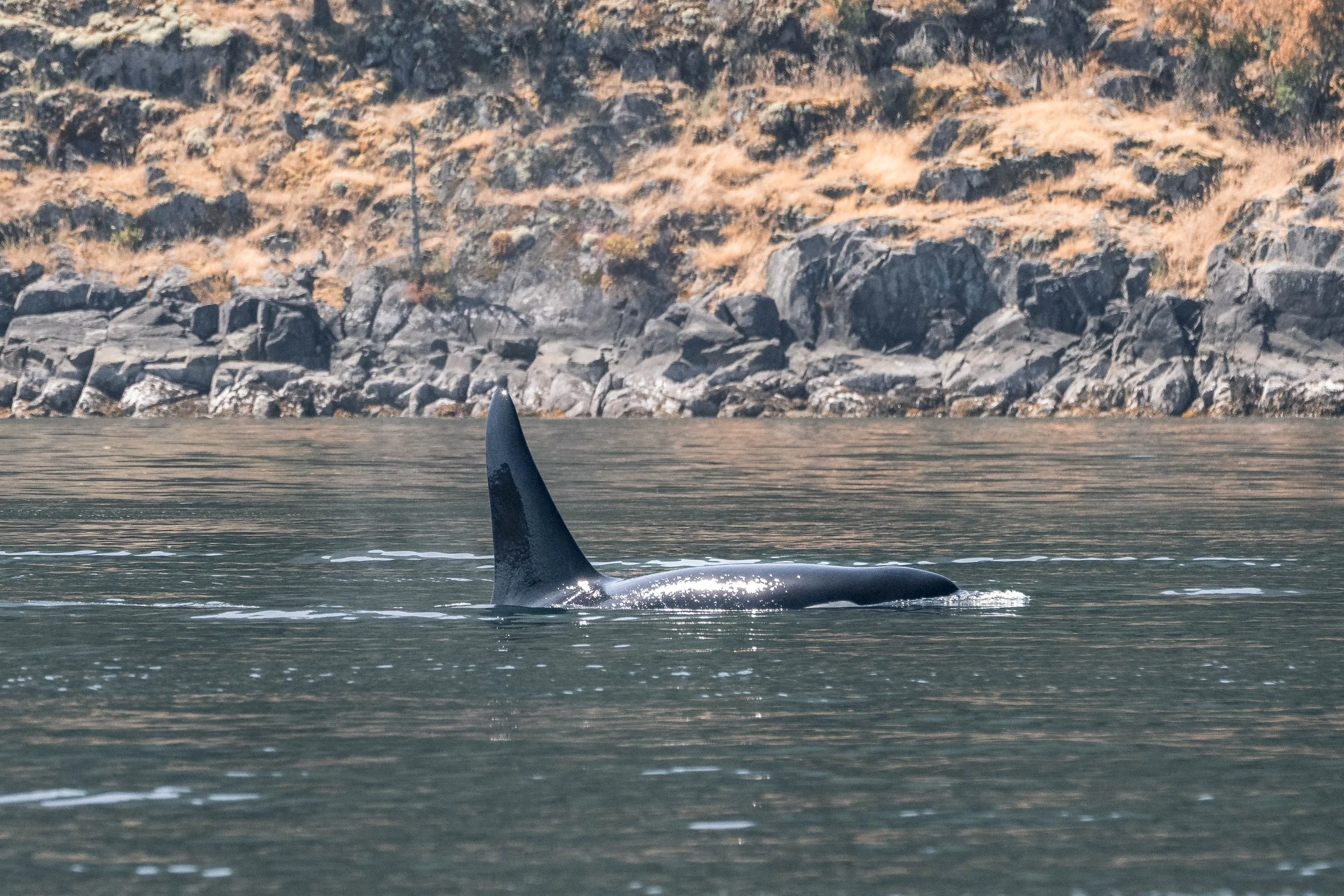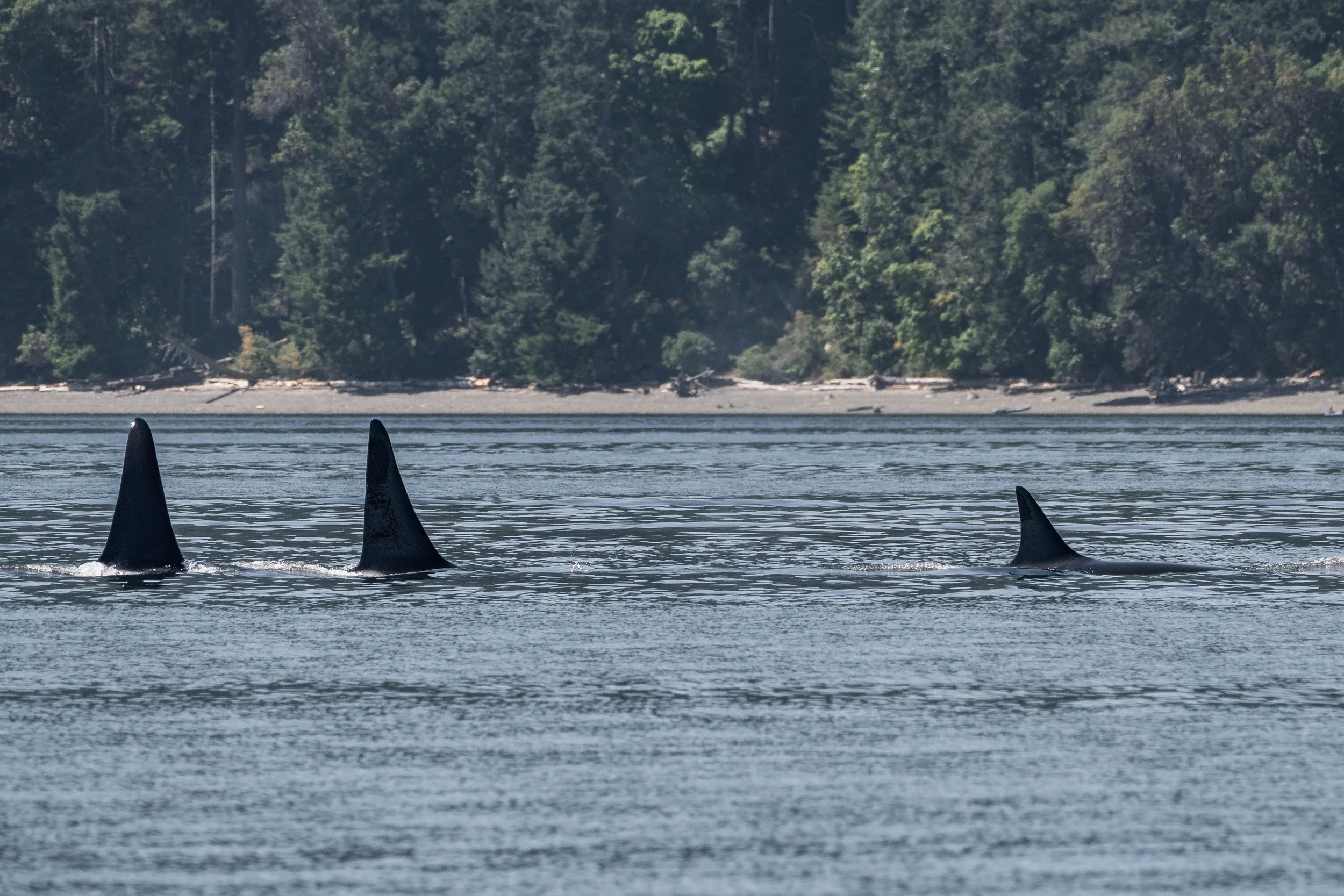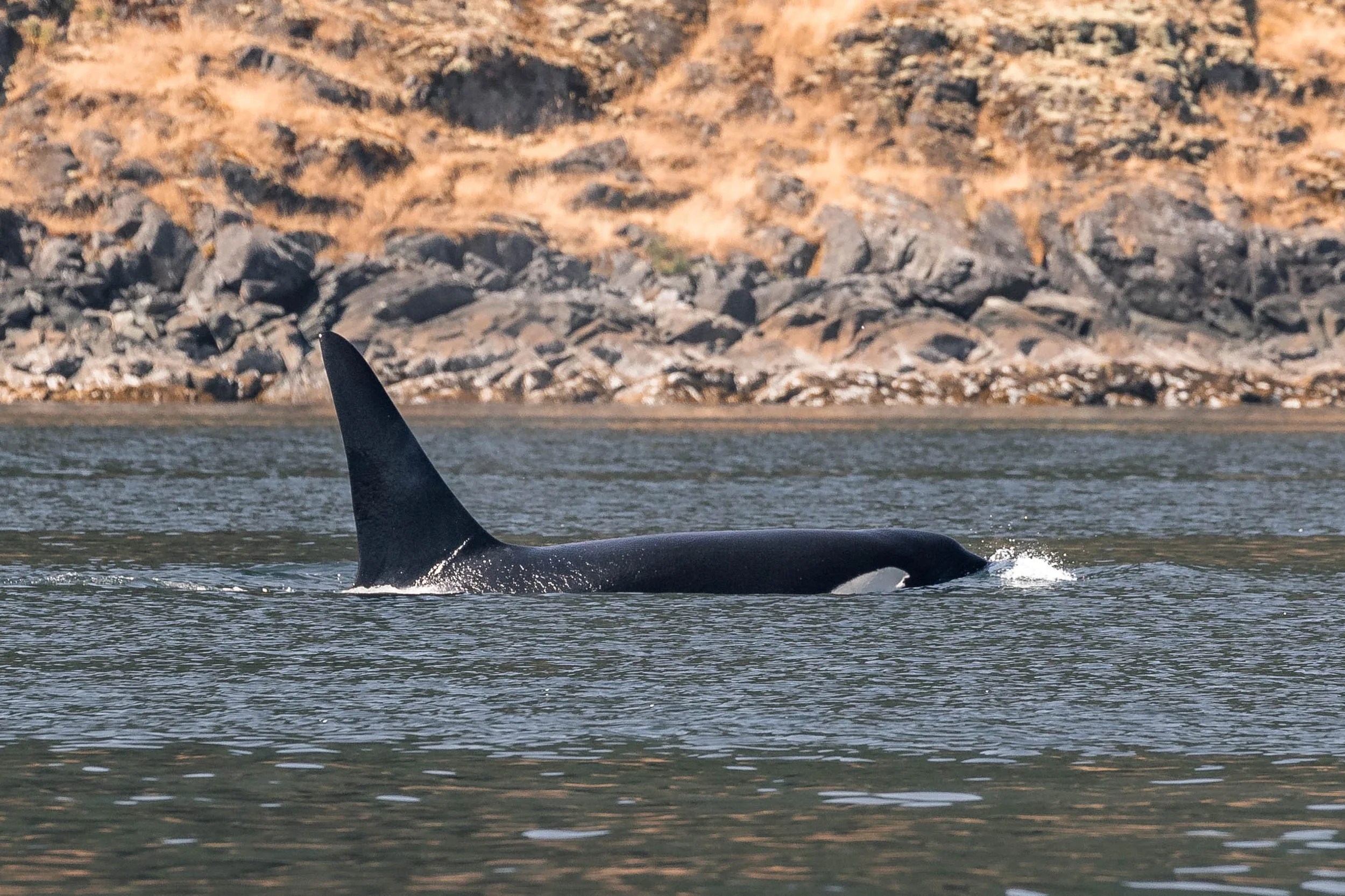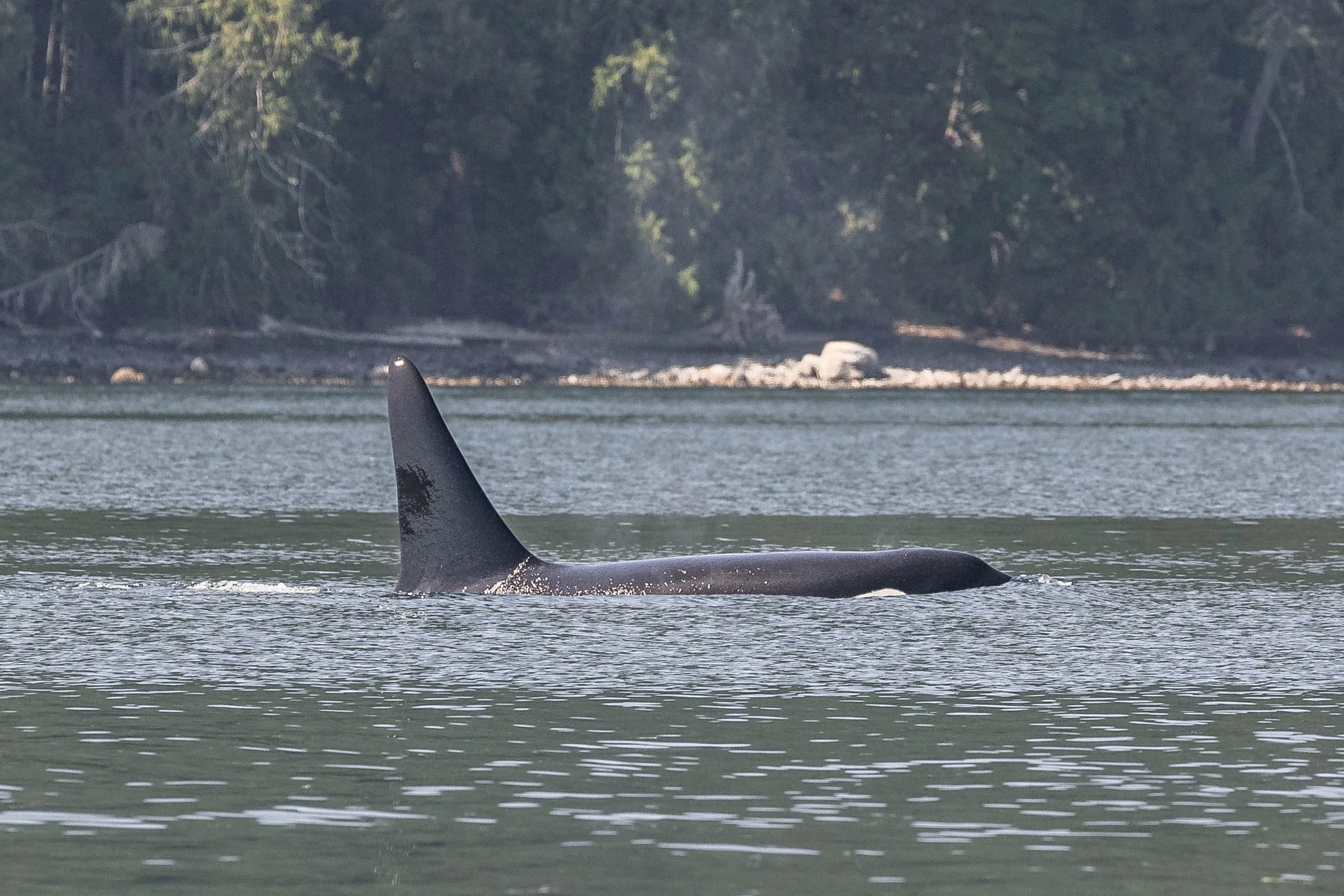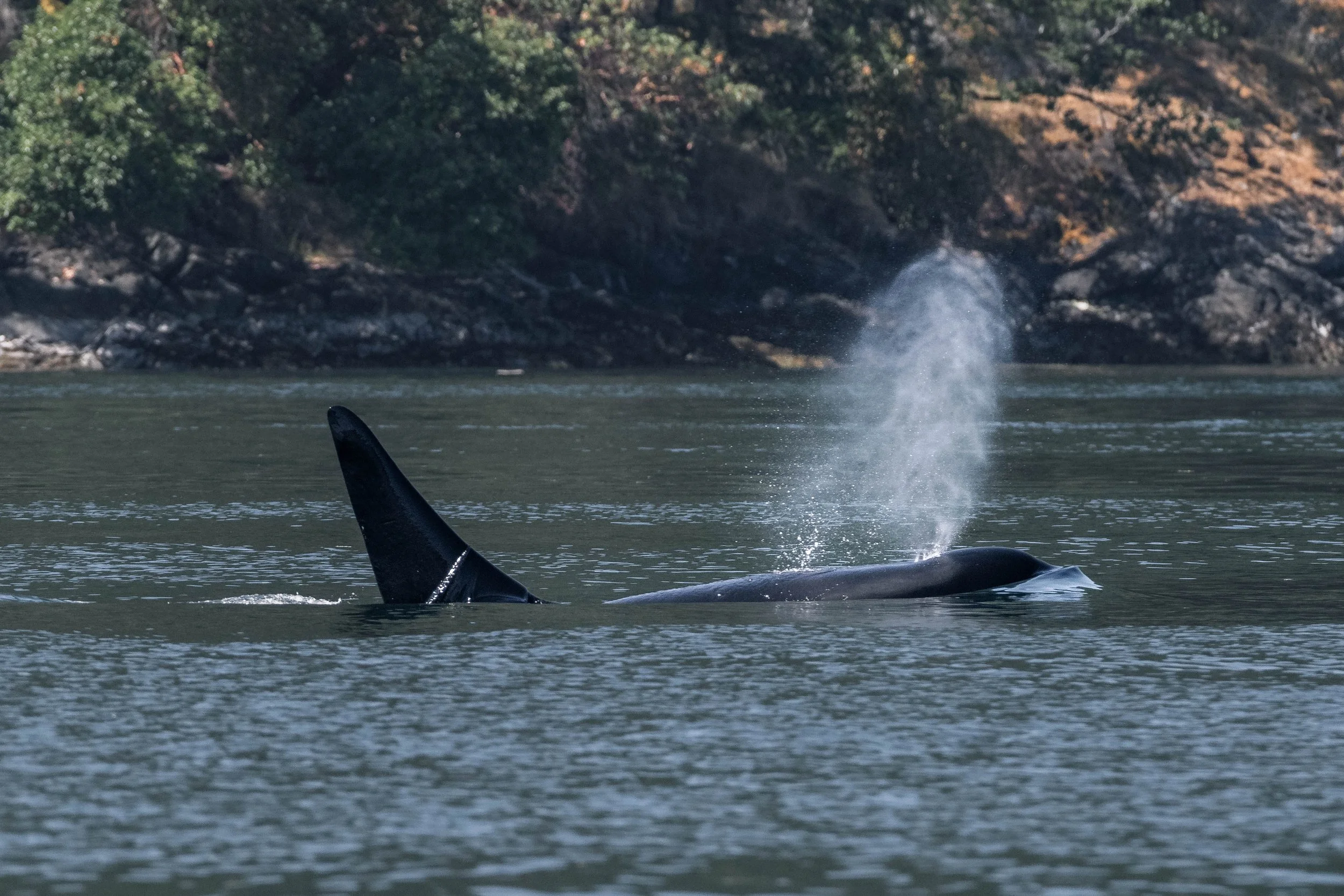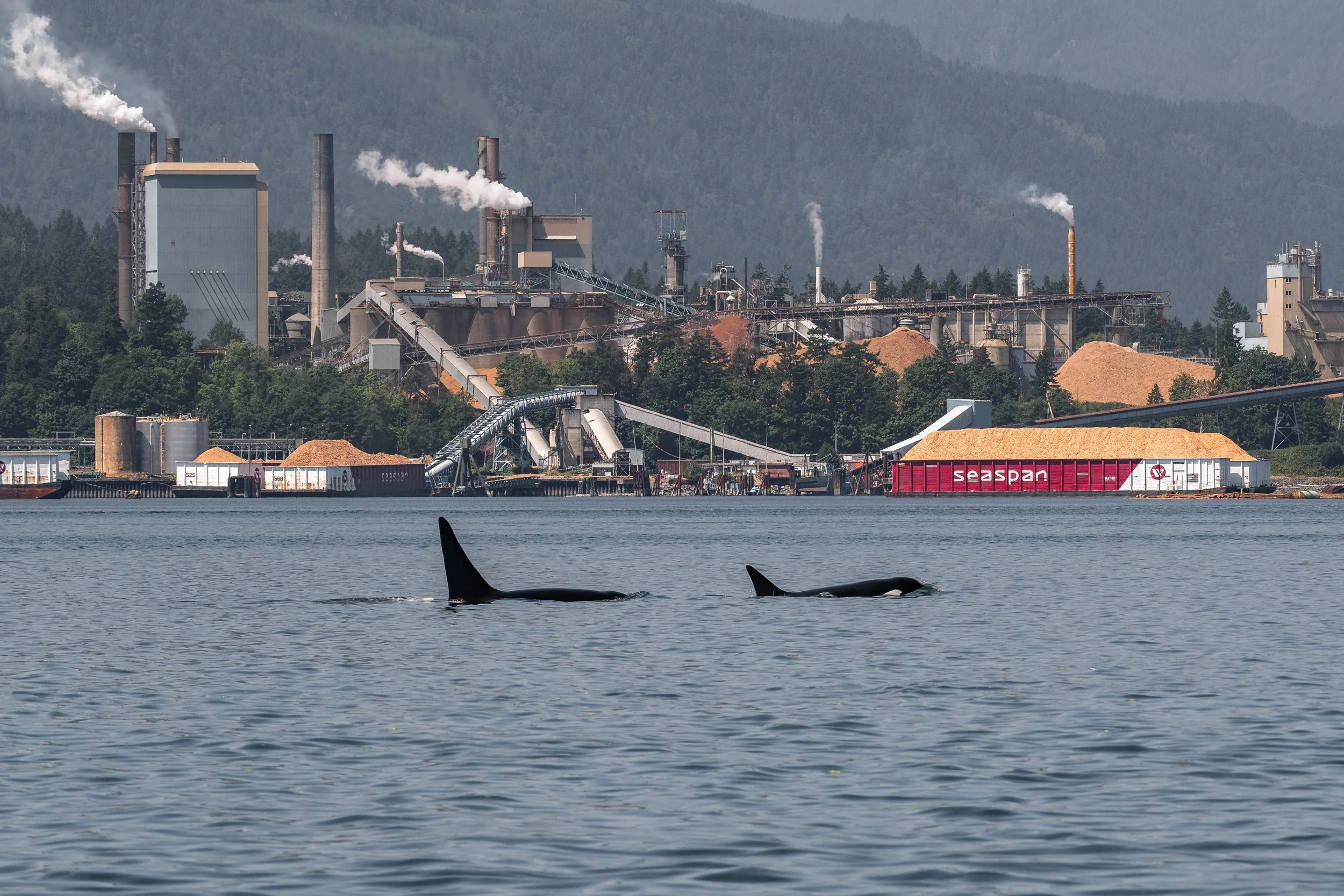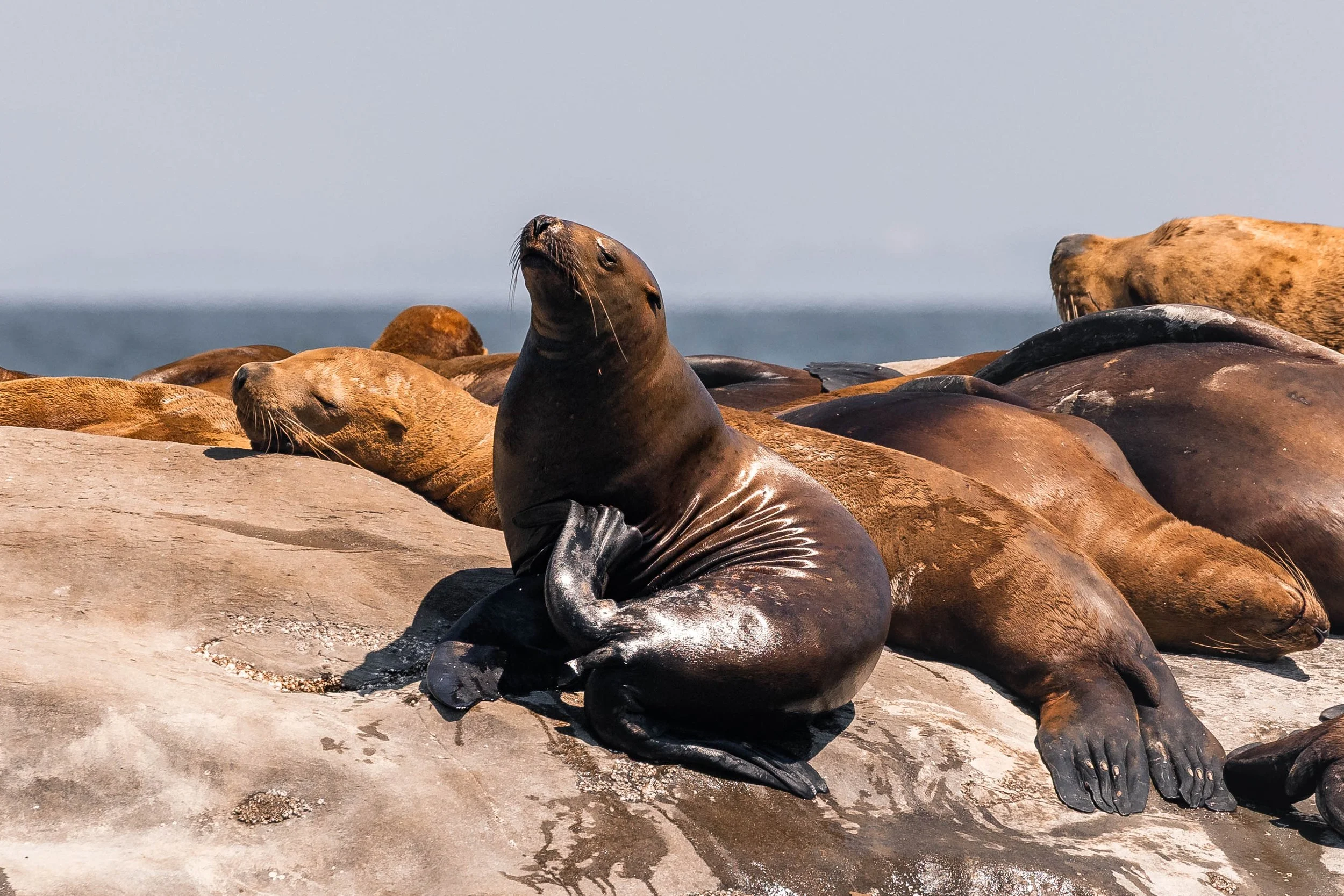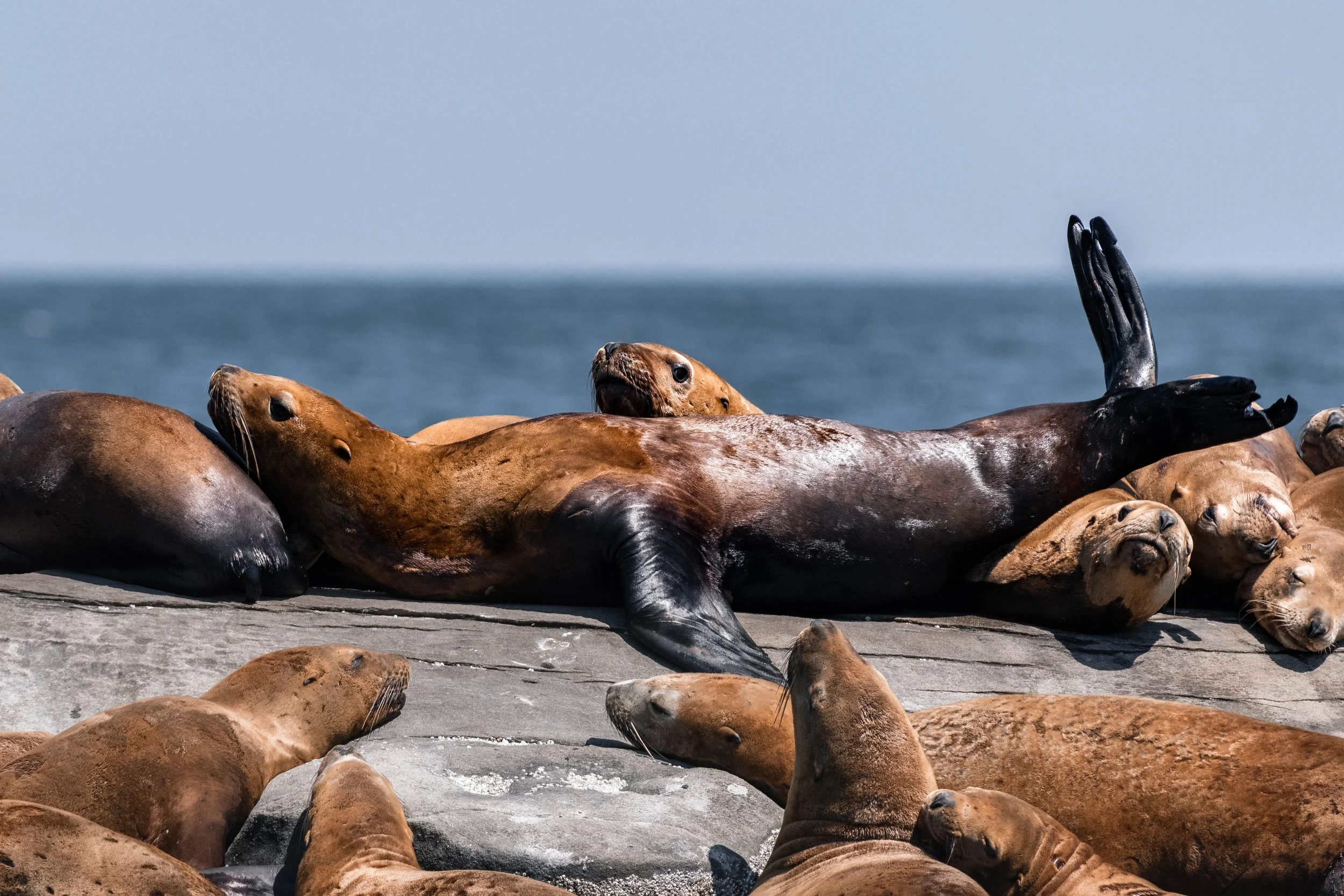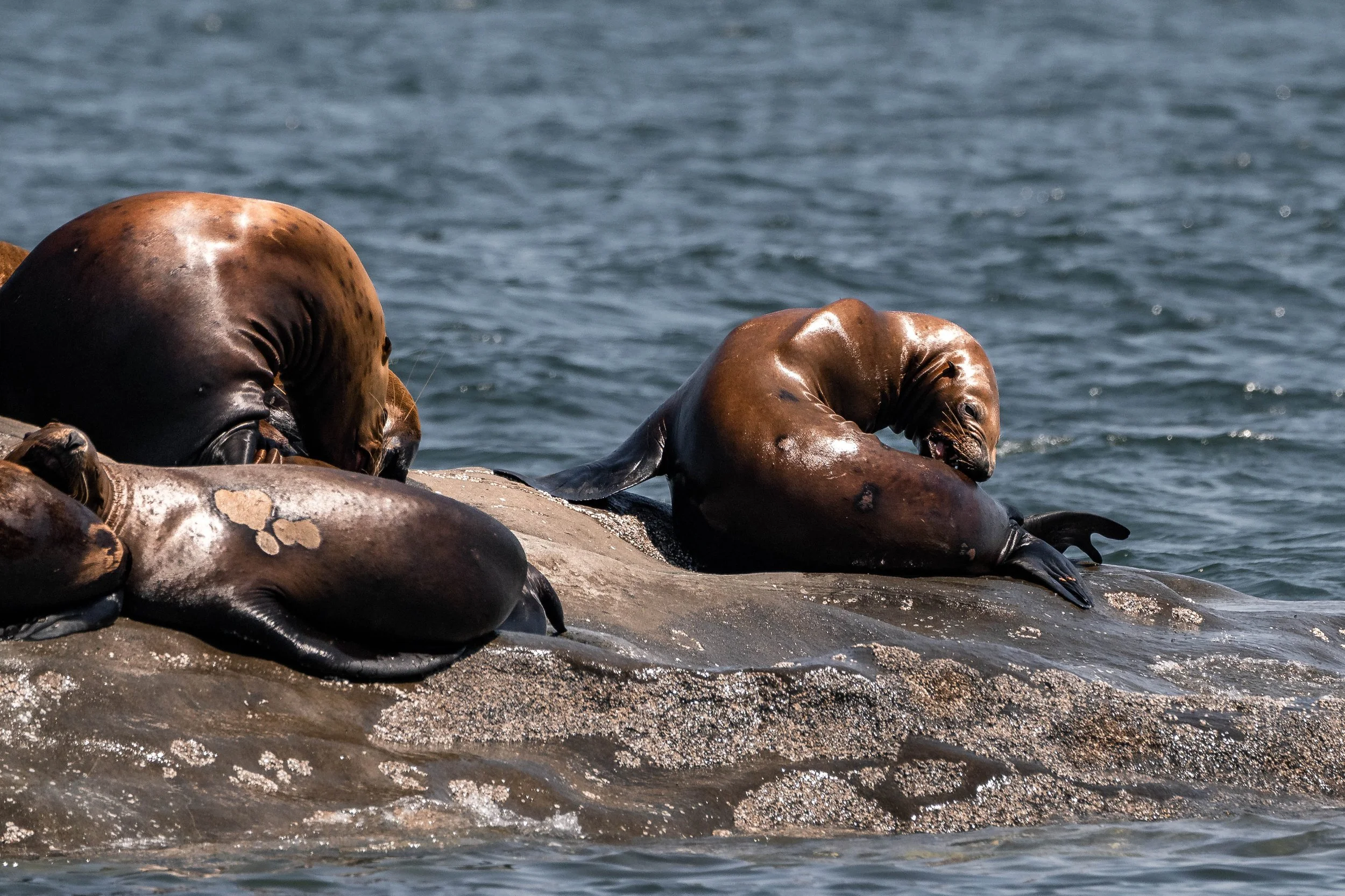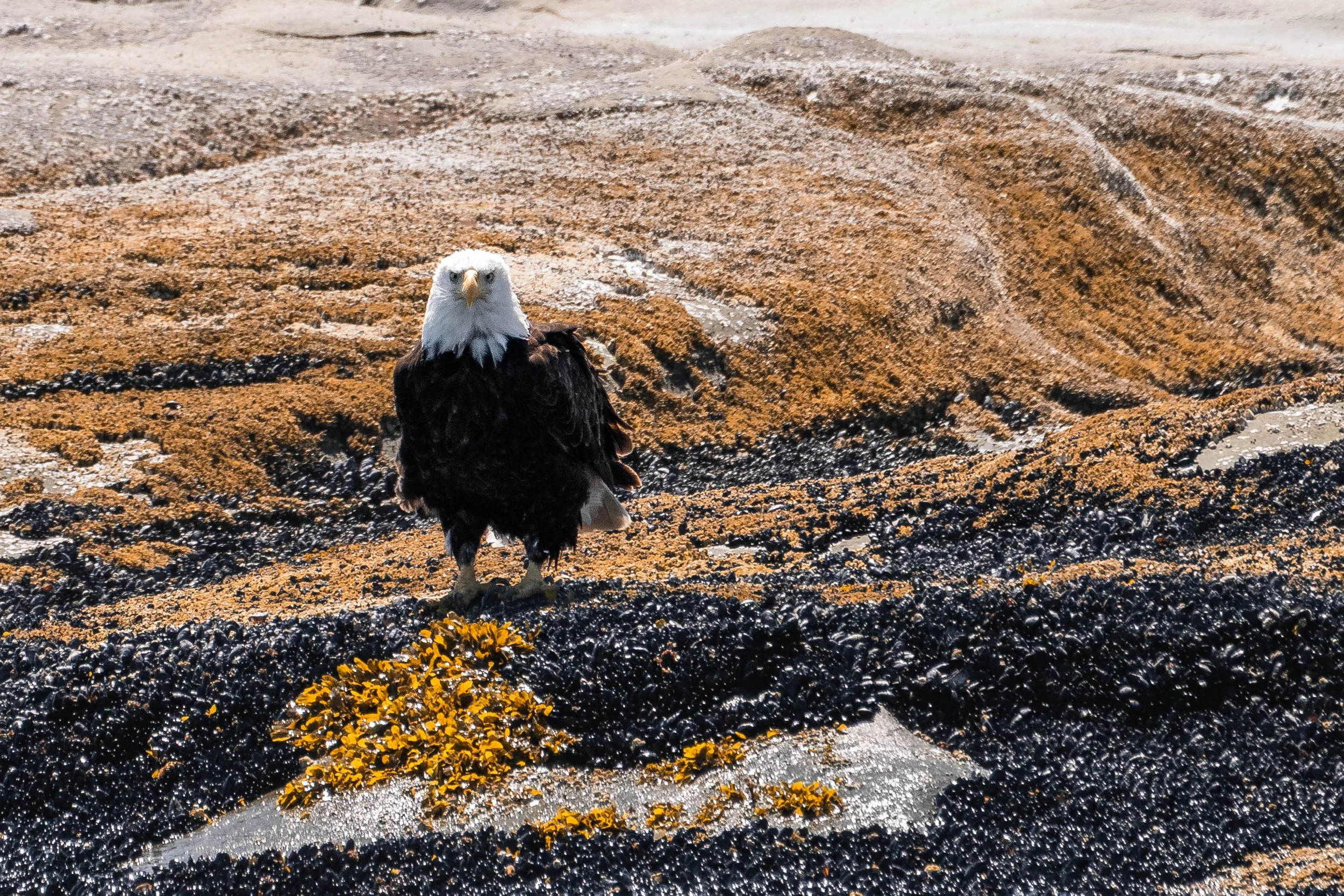July 16, 2025, 10:30 AM - The T101s meander along the inside passage
The inside passage and outer edge of the Southern Gulf Islands have been a hotspot for whale activity lately, so we began our trip heading south! Our boats split up, eyes peeled for signs of whales - specifically dorsals, flukes, or blows. Our open vessel Keta began scanning the inside passage, while our other open vessel Cascadia and semi-covered vessel Kula began their adventure into the Strait of Georgia.
On the inside, there are many gorgeous scenic spots along the way, such as the turbulent currents of Dodd Narrows and the beautiful coastlines of all the inner islands. On the outside, the magnificent silhouette of the mainland can be seen, and your sightlines are unobstructed, leading to the possibility of seeing animal activity from miles away.
After searching for a bit, we caught word of a shore-based sighting of a couple of orca near Crofton. Our fleet made our way over, continuously scanning - even when you have a report of whales nearby, you never truly know where they will appear once you are around! After a bit more peeking around, we found what we were looking for - a trio of orca, 2 large males and a little female, travelling together close to shore.
Once we arrived on scene, we began taking photos of the trio to confirm their identities. These three were identified as the T101s, a pod of Transient (Bigg’s) orca:
T101 Reef ♀ (≤1969)
T101A Rush ♂ (1993)
T101B Lagoon ♂ (1997)
This matriline is always very amazing to see, as Rush and Lagoon tower over their mother Reef so much. All three of these pod members sport very sleek and perfect dorsal fins, free of any notches. During this encounter, these three were simply travelling along, seemingly enjoying their day with not a care in the world.
However, lurking behind them was a reminder of the fragility of their well-being - these three were travelling through an industrial area, passing by a large mill with multiple smoke plumes billowing into the air. As apex predators, orcas are highly susceptible to toxic buildups in their bodies as toxins bioaccumulate up the food chain. So susceptible, in fact, that some individuals have tested positive to dangerous levels of toxic materials such as PCBs in their bodies. PCBs, or Polychlorinated Biphenyls, are a group of man-made chemicals that were once widely used in numerous industrial applications. One of their big issues with them is that they have a very long half-life - this means they take a very long time to naturally break down in the environment. Another big concern is PCBs are fat-soluble, so they meld really well with fat cells. This is especially concerning for orca that rely on their fat stores to keep themselves warm in frigid waters, resulting in them having a very high fat percentage in their bodies compared to most other species. Thankfully, PCB production has been banned worldwide, and one day, they should not be found as frequently in our ecosystem. There are also a number of risk management plans in place for industrial sites now to help reduce the likelihood of contaminants entering our waterways and inadvertently poisoning our plants and animals. In the meantime, we hope the world strives to reduce its waste footprint to help protect our fauna and keep our planet green for the future.
Once we wrapped up our time with the T101s, we departed, eyes always searching for more animal activity. Our adventures took us out into the Strait of Georgia to a little area alongside Valdez Island. Here, we stopped by a couple of small rocky islets lovingly dubbed “Stinky Rocks”. Stinky Rocks is a known haulout for a couple of our beloved pinniped species - specifically, our Harbour Seals and Steller Sea Lions. This time of the year is extra exciting for us, as our Harbour Seals are now having their pups! Many of our Harbour Seals stay in our area all year round, leading to us being able to view their full life cycle from newborn pup to a mature adult. Today, we were able to take a peek at a teeny tiny pup nestled beside its mother, likely no more than a day or two old. On the nearby shores, loud belches could be heard from the Steller Sea Lions as they fought for the best spots to nap on the rocks. These sea lions were making the most of the sunshine, bellies up to the sky, soaking in the rays. While most of them have returned to their breeding ground in Northern BC (or sometimes up in Alaska), we still have roughly 50 individuals who are still calling Stinky Rocks home. This could indicate that they may turn this area into a year-round haulout, which would be very exciting for us - it could be another opportunity for even more tiny baby pinnipeds to be spotted on our shorelines!
While the pinnipeds were impressive themselves, there was one other species that was resting on the rocks. Several Bald Eagles were walking along the rocks, likely looking for a bite to eat. We are reaching the end of the nesting season for our Bald Eagles in our area, with many of our Eaglets beginning to leave their natal nests. While it can be a bit sad to watch as the families disperse, it is incredible to see how many of these massive raptors return to our area every year. Once near the brink of extinction, these giant birds have now bounced back to great numbers - a great example of the importance of conservation!
We departed Stinky Rocks and made our way back to home port, wrapping up a fantastic day out on the waters, enjoying many of the various forms of nature you can find in the Salish Sea!
Please enjoy these photos taken by Marine Naturalists Val Watson, Aly Kohlman, and Hayleigh Hilbert!
T101A Rush. Photo by Val Watson.
T10A Rush, T101B Lagoon, and T101 Reef. Photo by Val Watson.
The mother of the boys, T101 Reef. Photo by Hayleigh Hilbert.
T101A Rush. Photo by Hayleigh Hilbert.
The brothers - T101A Rush and T101B Lagoon. Photo by Hayleigh Hilbert.
T101B Lagoon with his eyepatch above the surface. Photo by Hayleigh Hilbert.
T101A Rush. Photo by Hayleigh Hilbert.
A family photo! T101A Rush, T101B Lagoon, and T101 Reef. Photo by Hayleigh Hilbert.
T101B Lagoon. Photo by Hayleigh Hilbert.
T101B Lagoon’s dorsal slicing through the water. Photo by Aly Kohlman.
T101A Rush with one of the others taking a breath beside him. Photo by Aly Kohlman.
T101B Lagoon breathing. Photo by Aly Kohlman.
T101B Lagoon and T101 Reef, with the Crofton Pulp Mill behind them. Photo by Aly Kohlman.
A Harbour Seal snoozing in the sun. Photo by Aly Kohlman.
Look at how tiny and fluffy the pup is! Photo by Hayleigh Hilbert.
The cuddle puddle! Photo by Hayleigh Hilbert.
Scratch scratch scratch! Photo by Hayleigh Hilbert.
That doesn’t look very comfortable… Photo by Aly Kohlman.
Even sea lions get itchy! Photo by Val Watson.
A huge male Steller Sea Lion towers over the others. Photo by Val Watson.
Snoozing in the sunshine. Photo by Val Watson.
Getting glared at by a Bald Eagle! Photo by Val Watson.
A pair of Bald Eagles on the edge of Stinky Rocks. Photo by Hayleigh Hilbert.
Our open vessels, Keta and Cascadia, on scene with the whales. Photo by Val Watson.

